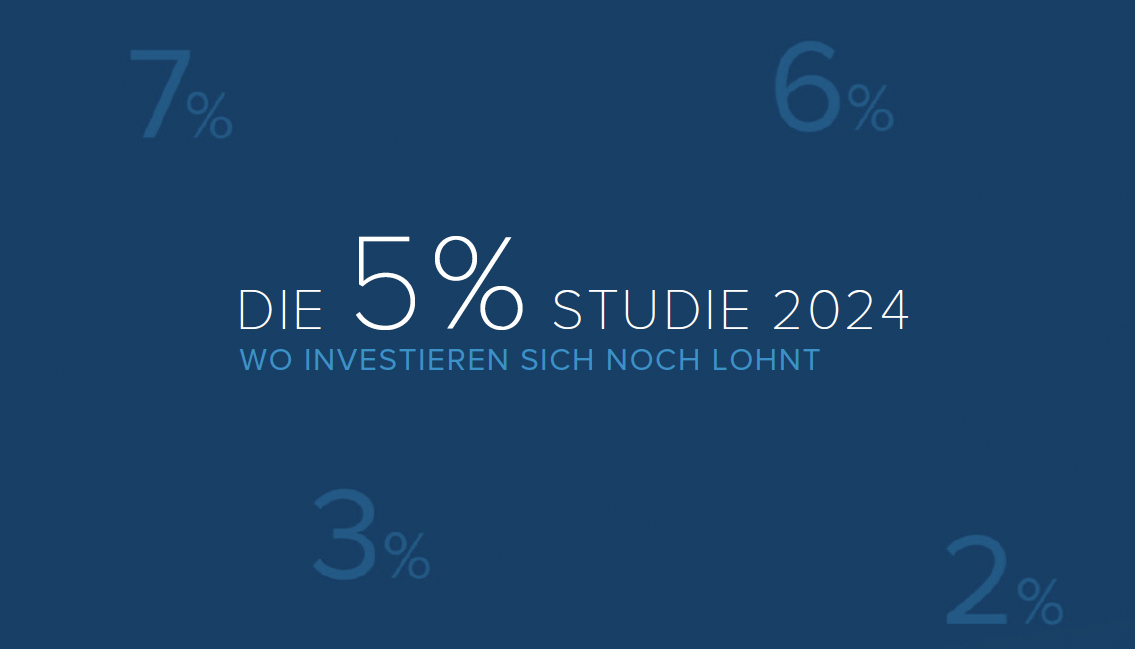Mixed risks
Twice a year we prepare economic forecasts and derive key figures for the various real estate segments. According to this, the caesuras in the economy affect the logistics, residential, office and retail segments very differently. In general, the picture is not as gloomy as it is often conveyed
Our team recently presented the bulwiengesa autumn forecasts to around 550 clients and interested parties in a webinar - read the summary here.
The factors hampering the economy, such as the rise in interest rates, inflation and construction prices, as well as the supply chain problem, are not causing difficulties across the board, nor for all types of real estate. The Deutsche Hypo Real Estate Climate has also recently risen slightly again in November; after a historic low in October, the players surveyed are somewhat more optimistic again.
In general, the picture is not as gloomy as it is often conveyed. Only in 2023 do we expect a decline in gross domestic product and private consumer spending. However, there will not be a V-curve, i.e. a rapid recovery. The stable labour market compared to other crises, the high savings rates that stimulate consumption and the dynamics of emigration give us hope.
The peak of the interest rate increase is expected towards the middle/end of 2023. In the medium term, inflation risks continue to grow, especially due to the increase in the price of energy products, which is also burdening the real estate industry. The effects of the weakening economy are already evident in the project development market: trading developments, i.e. classic developments for sale, recorded the strongest decline since the financial crisis at -8.3% (A-cities, analysis years 2010-22).
Contact: Ralf-Peter Koschny, Spokesman of the Executive Board at bulwiengesa, koschny@bulwiengesa.de.
Logistics real estate market as an anchor of stability
The market for logistics real estate will remain increasingly dynamic in the future with reshoring, nearshoring and the effects of the war in Ukraine. The high demand for space remains.
Although there is a lack of suitable logistics space, especially in the conurbations, the volume of new construction is rising again after a dip caused by the corona. Many developers are moving to previously less attractive locations. In 2023, new take-up will break the 6-million-sqm mark.
We forecast further rental growth, up to 25% at the top and in the prime locations. Yields will increase more significantly in the short term. Towards the forecast horizon of 2026, the increase will flatten out or yields will stabilise.
Contact: Oliver Rohr, Team Leader Office and Logistics Real Estate at bulwiengesa, rohr@bulwiengesa.de.
Residential real estate: high demand, lower affordability
A forecast of the residential property market requires a look at population trends: In the first half of 2022, Germany's population rose to over 84 million people for the first time. At the end of June 2022, 843,000 more people were living in Germany than at the end of 2021, largely due to immigration, especially from Ukraine. At the same time, fewer flats will be completed than planned by politicians - probably more like 250,000 instead of 400,000. Demographic change will determine the development of demand. This particularly affects the market for senior living - by 2040 there will be a shortage of around 470,000 housing units.
Demand and need remain unchanged in the housing market. For the first time in years, however, there are signs of a trend reversal in price developments. At the same time, affordability is deteriorating due to high inflation. Rents will continue to rise, but even the slightly falling prices for owner-occupied homes are of little use to flat seekers: on the one hand, project developers are postponing projects, thus reducing the supply in perspective, and on the other hand, the increased interest rates are making financing much more expensive.
Contact: Dr. Heike Piasecki, Head of Housing at bulwiengesa, piasecki@bulwiengesa.de.
Office market better than many expected
Despite several crises, the office market has proven to be surprisingly robust. Only the investment market has become quieter - the price expectations of sellers and buyers often do not come together, the finding phase continues.
A look at the A and B cities shows that the number of office workers has not declined, on the contrary. In the A-cities it will continue to rise over the next four years, only in the B-cities will growth flatten out. However, in the still smaller cities demographic change will partly cause a decline in the medium term. On the supply side, completions will continue to rise until 2024, but the pipeline will shrink in the medium term. Vacancy rates will continue to rise over the next few years, albeit from a very low level in the A and B cities. We are thus entering the area of a fluctuation reserve again. Tenants and landlords can negotiate at eye level again.
Offices will continue to be needed, albeit with slightly different concepts. It is no longer possible to imagine the investment market without ESG, which is already dominating it - and gradually also the rental market. The yield spread between core and non-core will also continue to increase as a result.
Contact: Alexander Fieback, Team Leader Office and Logistics Real Estate at bulwiengesa, fieback@bulwiengesa.de.
Retail real estate: less development, more management
In recent years, brick-and-mortar retail has weathered massive crises. With the right concept, it will continue to be successful in the future, even under the current conditions. Inflation is high and consumer sentiment is subdued. For the first time, online retail is also no longer the natural "crisis winner". Compared to 2021, the turnover of mail-order and internet retail fell by 2.3 %, but a plus of a good 30 % in real terms stands out in comparison to the pre-Corona year 2019.
Market corrections are evident in the rental developments in the city centres: despite the increase in nominal prime rents, the prime rent levels of the years 2015 to 2017 will not be reached again in the course of the next four years. And even before Corona, the rise in yields for high-street properties began. This trend is solidifying.
Almost all owners are currently focusing on repositioning. Both portfolio owners and project developers have to deal more intensively with the conversion of existing buildings, the optimisation of the space and sector mix or the expansion to include non-retail uses. The development-driven phase transitions to one in which excellent asset and centre management determines success. There is no getting around the intensive, well-versed examination of the portfolio.
Contact: Dr. Joseph Frechen, Head of Retail Division, frechen@bulwiengesa.de.
You might also be interested in
For our magazine, we have summarized relevant topics, often based on our studies, analyses and projects, and prepared them in a reader-friendly way. This guarantees a quick overview of the latest news from the real estate industry.
Little movement on the German real estate market
For the eleventh time, bulwiengesa presents its comprehensive analysis of the German real estate markets. The results of this year's 5% study, conducted in collaboration with ADVANT Beiten, show that the German real estate market is characterized by widespread stagnation. At the same time, niche segments are becoming increasingly attractive. The market is increasingly rewarding professional asset management and specialist knowledge—a trend that separates the wheat from the chaffFive per cent returns no longer illusory even for core properties
The ‘5% study - where investing is still worthwhile’ celebrates its tenth anniversary. Since the first edition was published, the German property market has tarnished its reputation as a safe investment haven. Higher yields are now within sight, even for prime properties, and even residential property is increasingly becoming a profitable asset class again. The market is more exciting than it has been for a long timeValuation for corporate insolvencies
In turbulent times, more companies than ever are facing insolvency. According to our data alone, this affects around 400 project developments and countless existing properties. Ideally, valuations for insolvency administrations show more than the actual valueInteresting publications
Here you will find studies and analyses, some of which we have prepared on behalf of customers or on our own initiative based on our data and market expertise. You can download and read many of them free of charge here.







